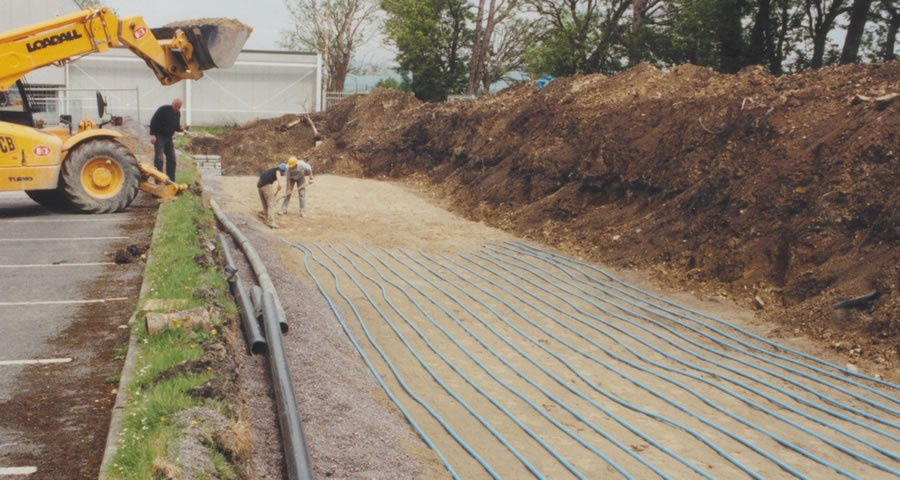
- Heating
- Posted
Going Underground
Geothermal heating is being specified by everyone from self-builders to developers to local authorities in increasing frequency across Ireland. As a relatively new technology in Ireland, it is crucial that anyone considering a geothermal system knows what they are getting into, to ensure an efficient, reliable heating source.
With over 20 years experience in this field in Ireland, Dr Paul Sikora, Vice Chairman of the Geothermal Association of Ireland explains what issues to be aware of when considering geothermal, from site suitability, to what to look for from suppliers and installers.
Today many people involved in the building industry will have heard some mention of geothermal heating. Sometimes it is referred to as 'underground' or 'pipes in the ground' heating. Both descriptions are appropriate, but they do little to help us understand how it works and even less to help us decide whether it might be suitable for the project we are involved in – be it building or extending the family home, or designing an office block, hotel or housing development.
In Ireland geothermal heating is almost always a type of solar heating because the earth’s crust beneath us is solid and serves to insulate us very effectively from the heat deep down. The only hints we have of true geothermal heat are the few warm springs scattered around the country.
When people speak of geothermal heat in Ireland, they are referring to techniques for refining or concentrating the low grade heat which resides in the ground or water around us. The techniques used will vary with the possibilities of the site in question, but they all amount to a way of making part of the site surroundings do double duty as a solar panel.
When viewed this way, geothermal heating sounds more like a type of architecture. In fact this is a good way to see it, since the task of identifying, quantifying and exploiting the geothermal resource is as individual as is each and every building site. Just as a house is much more than piles of concrete, timber, glass and slate, so a geothermal heating system is much more than coils of pipe and a refrigeration unit. Just as a building requires a design element or architect as well as an assembly element or builder, the geothermal system must be designed as well as installed.
Assessment and design
If you are looking at the possibility of using geothermal heating in your project the first step should be to see whether it is suitable for the application and whether it is feasible to develop a geothermal source on the site. Suitable applications are those where a geothermal installation could reduce the life cycle cost of the project and reduce the life cycle energy demand of the project. In other words it should have a good prospect for an economic return. The feasibility of implementing a geothermal heating system is an architectural/engineering question, which must be addressed before even attempting to assign a budget to the project.
Geothermal sources can take quite a variety of forms. Most common is the shallow horizontal array - looking much like an underfloor heating layout in your yard or garden. But even this is only the starting point for a design. Other factors to be taken into account are the composition and percolation of the soil, the topography, and even the shape of the intended ground parcel. Finally, one must consider the effect of trees, of other buried services and soak-aways, percolation fields and longer term development plans for the site.
Other sites may have water-based geothermal potential. Here one could mention streams, ponds or lakes, shallow high-yielding aquifers or even a steady source of waste water. Again the design exercise must take into account the amount of heat sought and the ability of the proposed geothermal source to meet this need throughout the season. The exercise must be done taking into account the restrictions imposed by the site, as well as the expectations of the client.
Finally there are sites with little or no free ground space and no hydro-geothermal potential. Here the direct approach is to use bored holes to insert heat exchanger loops vertically rather than horizontally. This technique is well developed throughout Scandinavia and North America where severe winter weather makes horizontal arrays less attractive. Accurate design and proper installation of vertical heat exchanger loops is essential because they are for all intents and purposes inaccessible once put in place.
The one thread common to all the above approaches is the importance of the geothermal supplier doing a comprehensive design exercise before presenting a detailed proposal. On the other hand most geothermal system suppliers are busy and will try to separate out a casual enquiry from a serious interest before committing to an on-site assessment.
You can do a number of things to get the best value from a pre-visit budget quotation. Firstly, submit a full set of house plans so that the geothermal provider can determine a heat demand figure. Secondly, include a site map showing as much detail as possible of buildings, paved areas, contour lines and any permanent features, which could affect collector design. Finally give an indication of the type of soil found down to a depth of about 1 metre.
After sending in the above information plus any details of water-based resources, you should expect to receive an initial budget-costed proposal for a geothermal system tailored to your site. If the budget figure lies within the range you are able to consider and if the projected fuel savings/payback is favourable, the supplier should be able to arrange a site visit to confirm details and formulate a firm quotation.
In current market conditions (mid 2004), a well-designed geothermal system with a horizontal array collector serving home heating plus domestic hot water can show simple pay back times as low as 6-8 years. Vertical array collectors or pumped borehole sources are more expensive, but should still have indicated payback periods not much over 10 years. Commercial installations in heat-intensive applications such as wet leisure facilities or health care institutions can have even more favourable economics.
Installation
Geothermal collector installation is a skilled craft and should be undertaken only by experienced teams. Although the finished job may be jokingly characterised as ‘pipe in a hole’, a badly laid array will result in an underperforming system at best or a non functional system if it is seriously deficient. It is also a mistake to think that a high quality heat pump can in some way compensate for shortcomings of the collector. This is much the same as believing that a high performance engine will do a better job of running on an empty fuel tank.
To satisfy yourself on this score you may ask how the collector is designed and how the heat pump was selected for the job. The potential supplier should be able to provide at least some of the sizing rules employed and the procedures used to match heat pump and collector.
With water based collector loops, the collector pipe array is supplied separate from the heat pump, allowing the system supplier to make a specific match between the two. Up to a point, the bigger the collector array the better. A supplier who has performed this exercise in selecting a system should be able to tell you how the design has been selected if not give you the specifics of their proposal.
Some geothermal systems use refrigerant in the collector pipes, eliminating the need to exchange heat from the collector fluid to the refrigeration circuit. These systems are often factory matched if not pre-assembled. The supplier should be able to inform you as to how much refrigerant is used, what chemical is used as refrigerant, and how much pipe is employed in the collector.
Yardsticks and checkmarks
A good way to cover a number of queries is to determine whether the equipment has been certified by any independent rating organisation. Suppliers are normally quite happy to tell you if their products have been tested and have received one or other of the quality labels used for heat pump equipment. Details of several of these marks are listed by Sustainable Energy Ireland in their Buyer’s Guide to Renewable Heat Pumps. Another convenient source of information is the UK Clearskies programme whose website carries a list of products and installers meeting the criteria for grant support under the programme.
Choosing wisely
Geothermal heating is not an emerging technology but it is a newcomer to the market in Ireland. Your chosen geothermal supplier should have a combination of technical competence, experience in Irish installations and a real commitment to providing ongoing support for their customers. The best way to answer these questions for yourself is to talk to someone who has one of their systems, preferably one which has been in operation through at least one full heating season. A good supplier will have no difficulty in giving you references.
Suppliers and installers of heat pumps in Ireland:
Eurotech Underfloor Heating Ltd
Other Sources on Geothermal Heat Pumps:
(Construct Ireland is not responsible for the content of these site or the information within.)
Information
- geothermal heating
- geothermal heat pumps
- underfloor heating
- geothermal energy
- ground source heat pumps
- air source heat pumps
- vertical collectors
- horizontal collectors
- passive house
- passive
- Passivhaus
Related items
-
 Big picture - New Zealand rural passive home
Big picture - New Zealand rural passive home -
 Podcast: what we've learned from 20 years in green building mags
Podcast: what we've learned from 20 years in green building mags -
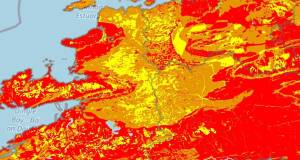 45,000 more Irish homes face radon risk, new maps reveal
45,000 more Irish homes face radon risk, new maps reveal -
 Passive house 30 years on: qualified success or brilliant failure?
Passive house 30 years on: qualified success or brilliant failure? -
 Above the curve - Limerick passive house showcases precision timber engineering
Above the curve - Limerick passive house showcases precision timber engineering -
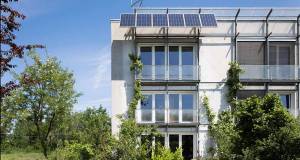 International passive house conference kicks off
International passive house conference kicks off -
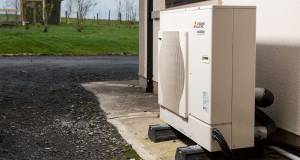 Evidence base: How air source heat pumps fare in canny retrofits
Evidence base: How air source heat pumps fare in canny retrofits -
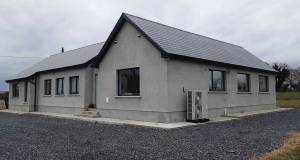 Athlone scheme hits NZEB with Firebird heat pumps
Athlone scheme hits NZEB with Firebird heat pumps -
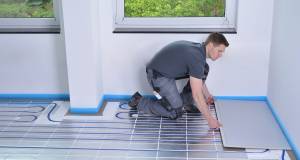 Unipipe launch easy underfloor heating for upper floors
Unipipe launch easy underfloor heating for upper floors -
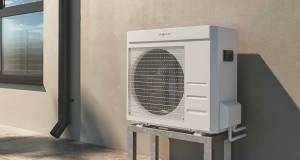 Viessmann launches new compact heat pump
Viessmann launches new compact heat pump -
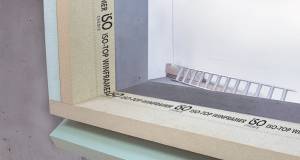 Iso Chemie Winframer gets BBA approval
Iso Chemie Winframer gets BBA approval -
 New issue of Passive House Plus free to read
New issue of Passive House Plus free to read

